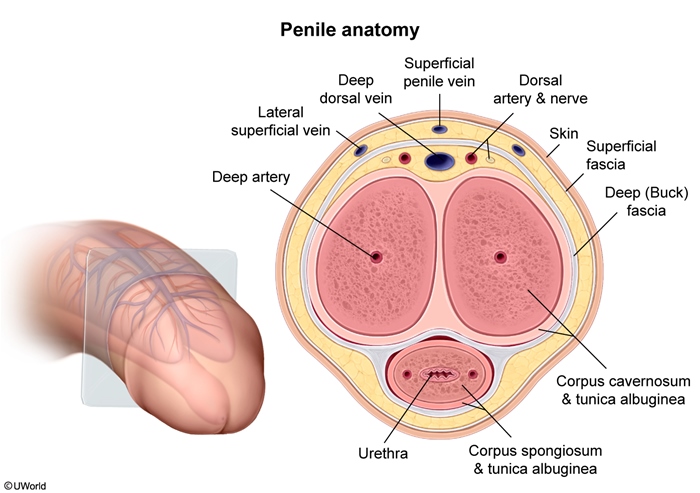Peyronie Disease
Article Sections
Introduction
Peyronie disease is a common condition characterized by the formation of fibrous plaques in the tunica albuginea of the penis (Figure 1), which causes pain, abnormal curvature, and erectile dysfunction. Distortion of the penis during erection may make sexual intercourse difficult or impossible.
Pathogenesis
The pathogenesis of Peyronie disease is not fully understood but presumably involves a combination of tissue injury, abnormal healing, and a genetic predisposition.
Repeated microtrauma to the penile tissue during sexual activity (often unrecognized) is thought to cause localized injury to the tunica albuginea, the elastic sheath that surrounds the corpus cavernosum (erectile tissue). In response to injury, there is an inflammatory response that involves cytokine release, fibroblast proliferation, and excess collagen deposition. This results in the formation of inelastic, fibrous plaques
Continue Learning with UWorld
Get the full Peyronie Disease article plus rich visuals, real-world cases, and in-depth insights from medical experts, all available through the UWorld Medical Library.
Figures
